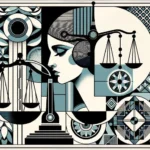We live in a time characterized by superdiversity, a term that extends beyond the traditional classifications of race or ethnicity. This concept encompasses a multitude of factors, including language, religion, social status, and economic conditions. Superdiversity is not just a trendy term; it serves as a lens for examining the complexities of today’s society. This perspective becomes particularly useful when applied to the field of constitutional law.
Traditionally, constitutions were seen as rigid frameworks designed to provide a stable foundation for legal systems. However, as society becomes increasingly diverse, this conventional view falls short. It’s crucial to understand that constitutions are living documents, evolving to reflect the ever-changing tapestry of human experiences. This is especially true in Europe, a continent that has long been a melting pot of various cultures, languages, and traditions.
So, what implications does superdiversity hold for constitutional law? First, it prompts us to think beyond the obvious categories. Discrimination is not solely about race or gender; it’s a complex issue that can manifest in numerous ways. Second, it calls for greater flexibility in interpreting legal texts. A constitution written a century ago may not adequately address the complexities of a superdiverse society today.
The Constitutional Landscape: Reflecting a Nation’s Identity
Constitutions often serve as the cornerstone of a nation, providing a set of guiding principles that govern society. However, it’s important to recognize that these documents are not static; they are dynamic entities that adapt to the changing values and needs of a society. In Europe, for example, the constitutional landscape is incredibly varied, reflecting the continent’s rich history and diverse cultures.
Discrimination is far from a monolithic issue; it’s a multi-layered phenomenon that defies easy categorization or definition.
Consider the issue of anti-discrimination clauses. Across Europe, 42 constitutions contain specific provisions designed to prevent discrimination. The framing of these clauses can differ significantly from one country to another. Some constitutions offer a detailed list of grounds on which discrimination is prohibited, such as race, gender, and religion. Others take a more open-ended approach, allowing for a broader interpretation that can adapt to emerging forms of discrimination.
This variation in constitutional provisions is not arbitrary; it’s a reflection of each nation’s unique historical, cultural, and social context. A constitution is more than just a legal document; it’s a mirror of a society’s collective identity, its values, and its aspirations. The choice between a detailed or open-ended list of discrimination grounds is a telling one. It reveals how a society perceives itself and how it wants to be perceived by others.
The Challenges and Rewards of Comparative Analysis
In the pursuit of understanding the complex relationship between constitutions and superdiversity, a comparative approach was employed. This method involves scrutinizing constitutions from various European nations, each penned in its own unique language. While this approach offers a wealth of information, it comes with its own set of challenges, particularly in the realm of linguistic diversity.
Europe is a continent rich in languages, and each constitution is written in the native language of its respective country. This linguistic variety presents a significant hurdle in comparative constitutional law. The absence of standardized legal terminology makes direct comparisons difficult. To navigate this challenge, unofficial translations were used, acknowledging that some nuances might be lost.
Another obstacle lies in the lack of a universal legal lexicon. Terms that appear similar in different languages may carry distinct connotations, depending on the socio-cultural context. For example, the notion of “freedom” in one country might not align perfectly with its interpretation in another. This complexity calls for a nuanced approach, one that recognizes the limitations of language while striving for a comprehensive understanding.
Despite these hurdles, the comparative method remains invaluable. It allows for the identification of common themes and divergences in how different nations tackle similar issues. More importantly, it provides a broader perspective, enabling a look beyond the confines of a single legal system.
The Dynamics of Discrimination: A Complex Landscape
Discrimination is far from a monolithic issue; it’s a multi-layered phenomenon that defies easy categorization or definition. In the analysis of European constitutions, a wide array of provisions addressing discrimination was found, each reflecting the unique social and cultural fabric of its nation.
For example, some constitutions focus heavily on national origin as a basis for discrimination, underlining the need to protect minority communities. Others prioritize language, acknowledging its role in shaping identity and a sense of belonging. Some even highlight economic status, recognizing that discrimination often intersects with issues of wealth and class.
The era of superdiversity calls for a rethinking of constitutional law
This variety in constitutional provisions isn’t coincidental; it reflects the superdiverse societies we live in. In a world where individuals are defined by a complex interplay of factors—ranging from religion and ethnicity to social and economic conditions—our legal systems must adapt. They need to move beyond traditional categories and embrace a more nuanced understanding of discrimination.
What does this mean for constitutional law? It means expanding our horizons. Discrimination isn’t a one-size-fits-all issue; it’s a complex phenomenon that manifests in various ways. Therefore, constitutions must be flexible enough to address this complexity. They need to be capable of evolving to meet the ever-changing dynamics of discrimination in a superdiverse world.
The Role of Legal Texts: Navigating the Limitations
Legal texts like constitutions carry significant weight, often viewed as the ultimate guides for societal governance. However, it’s important to recognize that these documents have their limitations. While they set the stage for public policies and legal interpretations, they can’t capture the full complexity of human interactions. This becomes especially clear when dealing with discrimination in a superdiverse society.
The need for adaptability is not just a theoretical concept; it’s a practical necessity.
The law isn’t static; it’s a dynamic entity that evolves. It’s influenced by a range of factors, including cultural shifts, political movements, and international norms. This fluidity is both an asset and a liability. It allows the legal system to adapt to new challenges but also introduces an element of uncertainty. Laws are open to interpretation and can be swayed by external influences.
Constitutions don’t exist in a vacuum. They’re part of a larger legal, social, and cultural ecosystem. They’re shaped by international human rights standards, judicial decisions, and even the legal frameworks of other nations. This interconnectedness adds another layer of complexity to the already intricate task of interpreting constitutional law in a superdiverse setting.
The Imperative of Adaptability
In the final analysis, the era of superdiversity calls for a rethinking of constitutional law. Constitutions must be flexible enough to adapt to a rapidly changing world while providing a stable legal framework. Understanding the complex interplay of factors contributing to discrimination can pave the way for more inclusive, equitable legal systems.
Constitutions are not the end-all solutions to the challenges posed by superdiversity. They serve as important guideposts, but they are part of a larger legal and social framework. This framework is influenced by a multitude of factors, including international human rights norms, judicial interpretations, and societal values.
The need for adaptability is not just a theoretical concept; it’s a practical necessity. As societies become more complex, so too must the legal systems that govern them. This requires a willingness to evolve, to question established norms, and to embrace new perspectives.
The age of superdiversity necessitates a new approach to constitutional law—one that is adaptable, inclusive, and cognizant of the complex realities shaping modern societies. This is not merely an academic discussion; it’s a pressing issue that has real-world implications for justice, equality, and human rights.
Adapted from an academic study for a wider audience, under license CC BY 4.0









